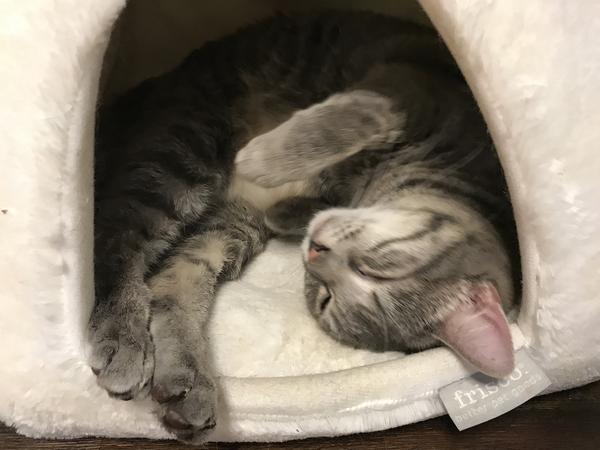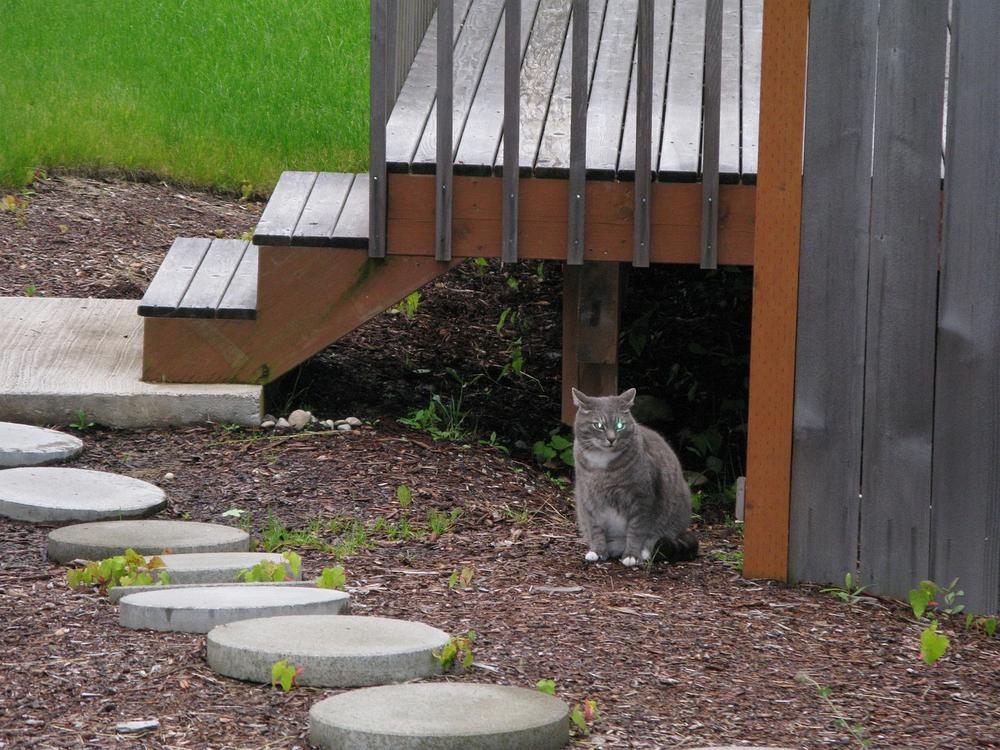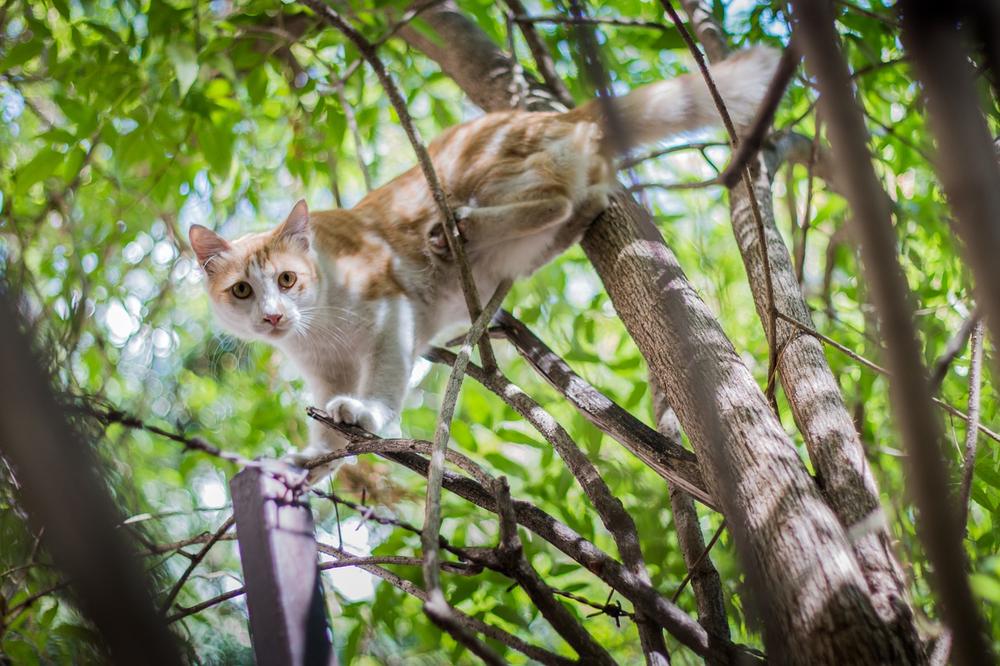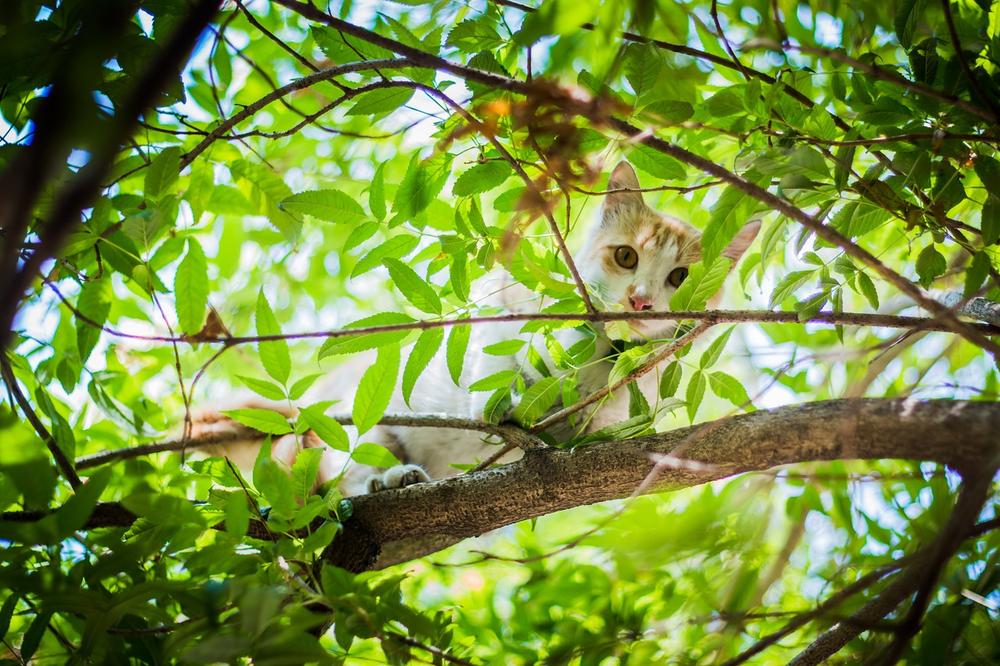What to Do When Your Lost Cat RETURNS Home? (Try This)

Feeling anxious about your lost cat's return home?
Worried if they're alright? 😟
Don't sweat it, I've been there.
I know what it's like to have your heart pound with every shadow, wondering if they're really back for good.
But fret not, let's dive into what to do next.
Steps to Take When Your Lost Cat Returns
When your cat who wandered off finally comes back, here's what you need to do:
- Give your cat a good bath and groom it to get rid of any dirt or fleas.
- Don't forget to check nearby outbuildings where your sneaky feline might have hidden itself.
- Make sure your cat is microchipped for identification purposes.
- Remember to update any online posts or listings about your lost cat so people know it's now safe and sound.
- It might be a good idea to consider getting your cat microchipped in case it goes missing again in the future.
- Don't just glance around your home and garden, but really search every nook and cranny, even those tiny spaces.
- Talk to your neighbors and delivery folks, show them a photo of your cat, and kindly ask them to keep an eye out.
- Take advantage of social media to spread the word about your missing kitty and let people know it's come back. 😺
- Entice your cat back home by leaving out items that smell like them, something familiar to lure them in.
- DIY some clear, attention-grabbing missing cat posters with your cat's photo and your contact info.
- Put those posters up all over your local community, make sure everyone knows your kitty needs to find its way back.
- And lastly, if you've made any changes to your contact info, don't forget to update your cat's microchip company so they can always reach you.
Increasing the likelihood of locating your misplaced feline companion and ensuring its safe return to your home is greatly enhanced by adhering to these instructions.

Never lose hope and keep going!
Keep looking until you bring your little furball back!
Main points I'll expand upon further down this article:
- Give the cat space and time to readjust to its surroundings.
- Slowly reintroduce the cat to family members and other pets.
- Expect temporary changes in behavior, but it should eventually return to normal.
- Show love and compassion to make the cat feel safe and cared for.
- Avoid allowing visitors until the cat feels comfortable.
- Introduce the cat to its new environment gradually to create a safe space.
- Take measures to ensure the cat's safety and security, such as keeping doors and windows closed.
- Provide a comfortable resting area for the cat to recover from stress.
- Monitor the cat's health and well-being with regular check-ups and balanced meals.
- Prevent cat disappearances by spaying or neutering and addressing specific issues.
Reestablishing a Routine for Your Cat
Here's how you can get your cat back on track, step by step:
- Feed them at the same time every day.
- Be patient and take it slow when reintroducing them to their surroundings.
- Give your cat some space and time to settle in again.
- Introduce other family members and pets gradually and carefully.
- Make sure they have plenty of time and room to adjust.
- Remember, there might be some temporary changes in behavior.
- Let your cat rest enough to regain their energy.
- Start introducing food gradually to prevent overeating.
- Keep an eye on their behavior and make sure they drink enough water.
- Show them lots of love and compassion, and create a safe environment.
- Take good care of them so they don't try to escape.
- Hold off on visitors until your cat feels comfortable.
Help your lost pet regain their sense of safety and confidence by creating a regular schedule and providing a stable environment.
With patience and understanding, you can bring back that familiar rhythm for your beloved feline friend.

And before I forget, I highly recommend checking out my article on safely moving house with a cat.
It's filled with tips and advice that will help you navigate this exciting but sometimes daunting transition.
So if you're feeling relieved about reestablishing a routine for your feline friend, but also a bit anxious about an upcoming move, I've got you covered.
Learn more in my blog post about Moving House With a Cat.
Creating a Safe and Secure Environment
When preparing your home for a cat, make it safe just like childproofing.
Introduce the feline friend to their new surroundings bit by bit to help them adapt.
Begin with a special room dedicated to them.

As they get comfortable, gradually expose them to the entire house while keeping safety in mind - always close windows and doors.
Ensure your cat has a stress-free zone for resting, offering protection and comfort.
To prevent escapes, update their collar and ID tags.
Cat doors or sanctuaries can safely secure the house. Consider using microchips or updated ID tags for added security.
Make their safety a priority - just as you would for a cherished child.
Recognizing Signs of Stress in Your Cat
Keep an eye out for signs that your cat might be stressed.
You ought to understand what they need.

Here are some things to watch for:
- Pay attention to their appetite. They might eat too much or not at all when they're stressed.
- If you notice them excessively grooming themselves, like licking and pulling their fur, it could be a sign of anxiety.
- Cats often hide away when they're overwhelmed. Look for them in secluded spots.
- Stress can make cats more aggressive towards humans or other animals.
- Changes in sleep patterns can indicate stress. Watch for excessive sleeping or restlessness at night.
- If your cat starts making unusual vocalizations, like yowling or hissing, it may be because they're stressed.
- Stressed cats might avoid social interactions and become less affectionate suddenly.
Don't panic if you see these behaviors right away.
Give your cat time and be patient with them.
With care and attention, they'll eventually go back to being their normal selves.
Seeking Medical Attention for Your Cat
To ensure your cat stays healthy, here are 11 steps you should take:
- You gotta make regular appointments with a vet you trust.
- Keep an eye on how your furry friend looks and acts all the time.
- Watch out for any changes in eating habits, weight gain or loss, and fur color.
- Especially when your cat goes missing, keep a close watch on it.
- Give your cat a bath to get rid of those pesky fleas and dirt.
- After keeping a good eye on their return, start feeding them again slowly.
- Take your cat to the vet often for thorough check-ups.
- If your cat gets hurt, don't delay seeking treatment.
- Follow your vet's advice and deworm your cat regularly.
- To prevent health problems, give small meals instead of big ones.
- Make sure there's always fresh water available for your cat.
You might want to consider getting your little buddy microchipped so they can be easily identified if they ever get lost.
It increases the chances of bringing them back to you.
After all, your cat's well-being relies on how well you take care of them. ✨
Understanding the Reasons Behind a Lost Cat
| Reason | Description |
|---|---|
| Specific problems | Cats may wander off due to specific problems such as lack of food or water, discomfort in their environment, or health issues. It is important to address these problems to prevent future escapes. |
| Theft | Unfortunately, cats can be targets for theft. Some individuals might steal cats for various reasons, such as selling them or using them for illegal activities. Ensure your cat's safety by not leaving them unattended and considering microchipping for identification. |
| Enticement | Cats can be enticed to explore new areas by the presence of other animals, attractive scents, or curiosity. Minimize the allure of potential escape routes by securing windows, doors, and gates, and keeping your cat entertained with toys and other stimulating activities. |
| Mating instincts | Unaltered cats may wander off in search of a mate, especially during breeding seasons. Spaying or neutering your cat can reduce their desire to roam and minimize the risk of accidental escapes. |
| Accidental transportation | Cats may accidentally end up in unfamiliar locations if they hide or sleep inside vehicles or open containers. Always double-check before closing any compartments or doors to prevent unintentional transportation. |
| Homing instinct | Sometimes, cats may attempt to return to a previous home or territory, even after being relocated. Provide a safe and comfortable environment for your cat to discourage them from wandering in search of their previous home or familiar surroundings. |
No cat owner ever wants to go through the pain of losing their beloved feline friend.
But sometimes, no matter how hard you try, it happens.
So, what can you do to make sense of it all?
Let's dig in and find out why cats go missing.
Cats are curious creatures, always searching for excitement and adventure.
And that thirst for exploration can lead them astray.
There are a few common reasons why a cat might run away.
It could be because they're trying to escape some troubles at home or maybe someone wicked stole them. Sometimes, it's just a temptingly friendly neighbor or the natural instinct to find a mate.
Other times, it could be accidental transportation, an attempt to return to their old territory after moving, or even a tragic accident while roaming outside. Their homing instincts can throw them off track, leading them far from home.
But don't despair, my fellow cat lovers!
I'm here to help you prevent future escapes and keep your kitty safe and sound.
First things first, consider getting your cat spayed or neutered. This not only helps stop them from wandering, but also has many health and behavioral benefits.
Next, you have to address any specific issues that may have caused your cat to run away.
Take a thorough look around your neighborhood, knocking on doors and handing out flyers with all the relevant details. Talk to your neighbors and ask for their help in finding your furry friend.
And don't forget, patience is key.
Even though cats have a remarkable sense of direction, lost cats can remain hidden for up to two weeks. So never lose hope!
The great outdoors can be a dangerous place for outdoor cats. They can get injured, caught in accidents, trapped inside sheds or garages, or seek shelter during bad weather conditions.
Stay tuned, my fellow cat enthusiasts.
In our next piece, we'll delve into what to do when your lost cat returns home, wagging its tail and twitching its whiskers!
Get ready for a heartwarming reunion filled with purrs and joy!
And that wraps up today's article.
But before you leave, can I ask you something? Was my blog post helpful to you? If it was, I would be extremely grateful if you could share it with your friends and family. You can simply click on any of the social media sharing icons to instantly share it. Thank you so much!
Talk soon,
-Sarah Davis